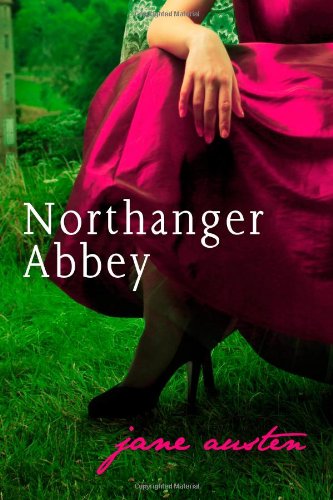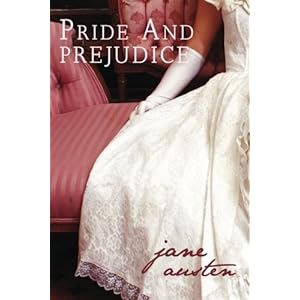Below are the titles of all the various materials I've reviewed in my blog this semester. Enjoy!
A Fate Totally Worse Than Death (Novel) Release date: 1995. Author: Paul Fleischman. Publisher: Candlewick Press. ISBN: 9780763621896.
A Tree Grows in Brooklyn (Novel) Release date: 1943. Author: Betty Smith. Publisher: HarperCollins Publishers Inc. ASIN: B00365QTQK.
The Boyfriend (Novel) Release date: 1990. Author: R.L. Stine. Publisher: Scholastic Inc. ISBN: 0590432796.
Can't Hardly Wait (DVD) Release date: 1998. Performers: Jennifer Love Hewitt, Ethan Embry, Charlie Korsmo, Lauren Ambrose, Peter Facinelli, Seth Green. Studio: Columbia Pictures Corporation. Director: Harry Elfont, Deborah Kaplan. Screenplay: Harry Elfont, Deborah Kaplan. ISBN: 9780671026455.
Catching Fire (Novel) Release date: 2009. Author: Suzanne Collins. Publisher: Scholastic Press. ISBN: 9780439023498.
The Clan of the Cave Bear (Novel) Release date: 1980. Author: Jean M. Auel. Publisher: Crown Publishers. ISBN: 9780553381672.
Crush du Jour (Novel) Release date: 2007. Author: Micol Ostow. Publisher: Simon Pulse. ISBN: 9781416950271.
Cut (Novel) Release date: 2000. Author: Patricia McCormick. Publisher: PUSH. ISBN: 0439324599.
The Date Book: A Teen Girl’s Complete Guide to Going Out With Someone New (Book) Release date: 2007. Author: Erika Stalder. Publisher: Zest Books. ISBN: 9780977266081.
Emily the Strange: Lost, Dark and Bored, Volume 1. (Graphic Novel) Release date: 2006. Author: Rob Reger and Buzz Parker. Publisher: Dark Horse Books. ISBN: 9781593075736.
The Fame (Album) Release date: 2008. Artist: Lady Gaga. Record Label: Interscope. ASIN: B001GM28HO.
Fearless (Album) Release date: 2008. Artist: Taylor Swift. Record Label: Big Machine Records. ASIN: B001EYGOEM.
Ferris Bueller’s Day Off (DVD) Release date: 1986. Performers: Matthew Broderick, Alan Ruck, Mia Sara, Jeffrey Jones, Jennifer Grey. Studio: Paramount Pictures. Director: John Hughes. Screenplay: John Hughes. ISBN: 0097360313345 begin_of_the_skype_highlighting
First Time (Novel) Release date: 2008. Author: Meg Tilly. Publisher: Orca Books. ISBN: 9781551439464.
GamePro (Magazine) Published since: 1989. Creators: Patrick Ferrell, Leeanne McDermott, Michael Kavish, Lynne Kavish. Publisher: IDG Communications. ISSN: 10428658.
Getting Revenge on Lauren Wood (Novel) Release date: 2010. Author: Eileen Cook. Publisher: Simon Pulse. ISBN: 9781416974338.
The Golden Compass (Novel) Release date: 1995. Author: Philip Pullman. Publisher: Ballantine Books. ISBN: 0345413350.
Heathers (DVD) Release date: 1989. Performers: Winona Ryder, Christian Slater, Shannen Doherty, Kim Walker, Lisanne Falk. Studio: New World Pictures. Director: Michael Lehmann. Screenplay: Daniel Waters. ASIN: B001KZNH4.
The House of Lost Souls (Novel) Release date: 2007. Author: F.G. Cottam. Publisher: Hodder & Stoughton. ISBN: 9780340953860.
The Hunger Games (Novel) Release date: 2008. Author: Suzanne Collins. Publisher: Scholastic Press. ISBN: 9780439023528.
I am Number Four (Novel) Release date: 2010. Author: Pittacus Lore. Publisher: HarperCollins Children’s Books. ISBN: 9780061969553.
Interview with the Vampire (Novel) Release date: 1976. Author: Anne Rice. Publisher: Ballantine Books. ISBN: 0345409647.
J-14 (Magazine) Published since: 2000. Publisher: Bauer Media Group. ASIN: B00005OM4W.
Lessons from a Dead Girl (Novel) Release date: 2007. Author: Jo Knowles. Publisher: Candlewick Press. ISBN: 9780763644857.
Life in the Fat Lane (Novel) Release date: 1998. Author: Cherie Bennett. Publisher: Dell Laurel-Leaf. ISBN: 0440220297.
Life Lists for Teens (Book) Release date: 2003. Author: Pamela Espeland. Publisher: Free Spirit Publishing. ISBN: 1575421259.
Little Brother (Novel) Release date: 2008. Author: Cory Doctorow. Publisher: Tor Teen. ISBN: 978-0765323118.
Mean Girls (DVD) Release date: 2004. Performers: Lindsay Lohan, Rachel McAdams, Lacey Chabert, Amanda Seyfried, Tina Fey, Amy Poehler, Tim Meadows, Lizzy Caplan. Studio: Paramount Pictures. Director: Mark Waters. Screenplay: Tina Fey. ISBN: 097363416043.
My Soul To Take (Novel) Release date: 2009. Author: Rachel Vincent. Publisher: Harlequin Teen. ISBN: 9780373210039.
97 Things To Do Before You Finish High School (Book) Release date: 2007. Author: Steven Jenkins and Erika Stalder. Publisher: Zest Books. ISBN: 9780979017308.
Northanger Abbey (Novel) Release date: 1818. Author: Jane Austen. Publisher: CreateSpace (2010). ISBN: 9781453767535.
Parrotfish (Novel) Release date: 2007. Author: Ellen Wittlinger. Publisher: Simon & Schuster Books for Young Readers. ISBN: 9781416916222.
The Perks of Being a Wallflower (Novel) Release date: 1999. Author: Stephen Chbosky. Publisher: Pocket Books. ISBN: 9780671027346.
The Plain Janes (Graphic Novel) Release date: 2007. Author: Cecil Castellucci and Jim Rugg. Publisher: DC Comics. ISBN: 9781401211158.
Points of View Reference Center (Database) Publisher: EBSCOhost. URL: www.ebscohost.com/public/points-of-view-reference-center. Accessed through: Santa Clara County Library.
Pretty. Odd. (Album) Release date: 2008. Group: Panic! At the Disco. Record Label: Fueled by Ramen. ASIN: B00132D808.
Pride and Prejudice (Novel) Release date: 1813. Author: Jane Austen. Publisher: Tribeca Books (2010). ISBN: 9781936594290.
Science Online (Database) Publisher: Facts on File. URL: http://www.fofweb.com/Science/. Accessed through: Santa Clara County Library.
Sense and Sensibility (Novel) Release date: 1811. Author: Jane Austen. Publisher: CreateSpace (2010). ISBN: 9781451539400.
Seventeen (Magazine) Published since: 1944. Creator: Walter Annenberg. Publisher: Hearst Corporation. ISSN: 0037301X.
Seventeen Presents 500 Style Tips: What to Wear for School, Weekend, Parties & More! (Book) Release date: 2008. Author: Emmy Favilla. Publisher: Hearst Communications, Inc. ISBN: 9781588166418.
Shonen Jump (Magazine) Published since: 2002. Creator: Based on magazine Weekly Shōnen Jump in Japan. Publisher: VIZ Media, LLC. ISSN: 15457818.
The Sims 3 (Game) Release date: 2009. Creator: Electronic Arts. Platform: PC. ASIN: B000166N6SA.
Split (Novel) Release date: 2010. Author: Stefan Petrucha. Publisher: Walker Publishing Company. ISBN: 9780802793720.
Star Wars: The Force Unleashed II (Game) Release date: 2010. Creator: LucasArts. Platform: Playstation 3, Xbox 360, Nintendo Wii, Nintendo DS, PC. ASIN: B0030F1D00 (PS3), B0030EU3TG (XBOX 360), B0030F1DQC (Wii), B0030EU400 (DS), B00302182A (PC).
The Subtle Knife (Novel) Release date: 1997. Author: Philip Pullman. Publisher: Scholastic Poitn. ISBN: 0590112899.
Super Mario Galaxy (Game) Release date: 2007. Creator: Nintendo. Platform: Nintendo Wii. ASIN: B000FG9QVI.
The Teen Book of Shadows: Star Signs, Spells, Potions, and Powers (Book) Release date: 2004. Author: Patricia Telesco. Publisher: Citadel Press. ISBN: 9780806524108.
Thirteen (DVD) Release date: 2003. Performers: Evan Rachel Wood, Holly Hunter, Nikki Reed, Brady Corbet, Jeremy Sisto. Studio: Working Title Films. Director: Catherine Hardwicke. Screenplay: Catherine Hardwicke, Nikki Reed. ASIN: B00013RC2K.
Willoughby’s Return: A Tale of Almost Irresistible Temptation (Novel) Release date: 2009. Author: Jane Odiwe. Publisher: Sourcebooks Landmark. ISBN: 9781402222672.





